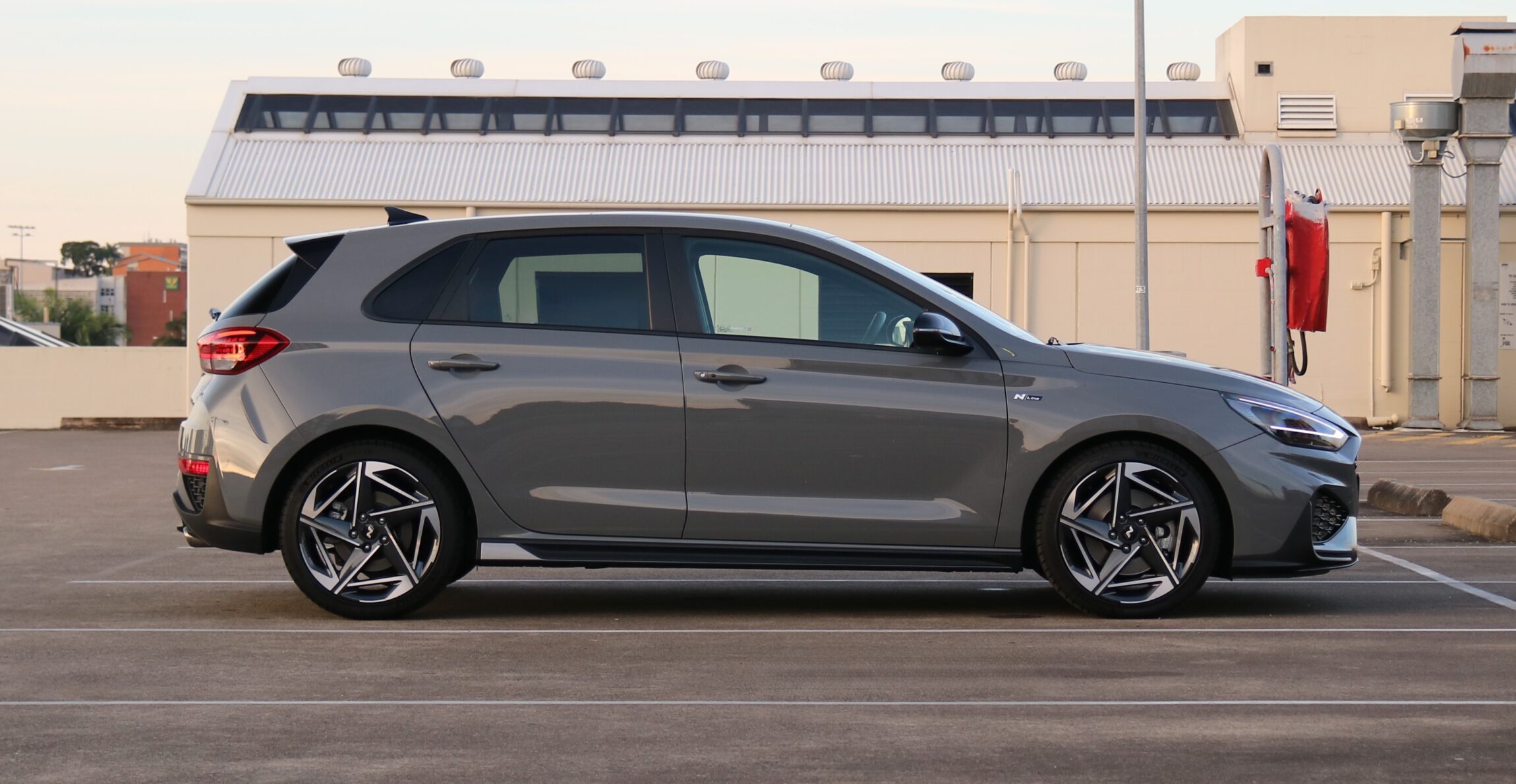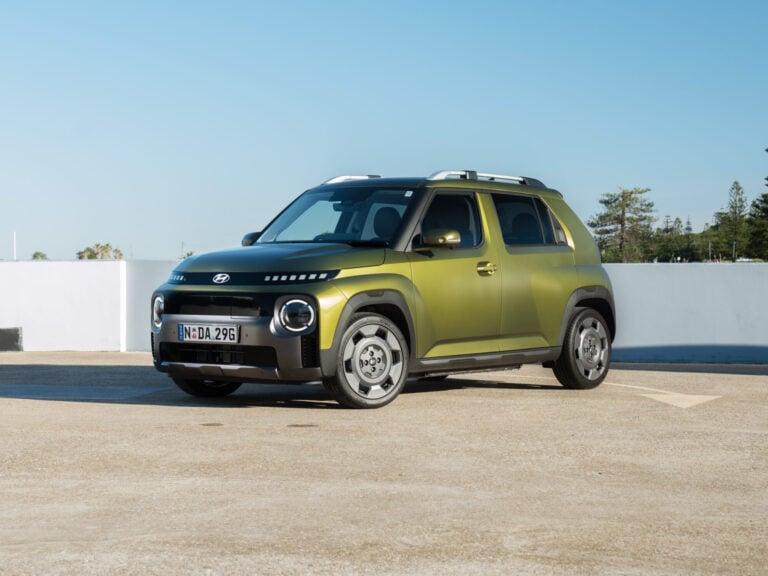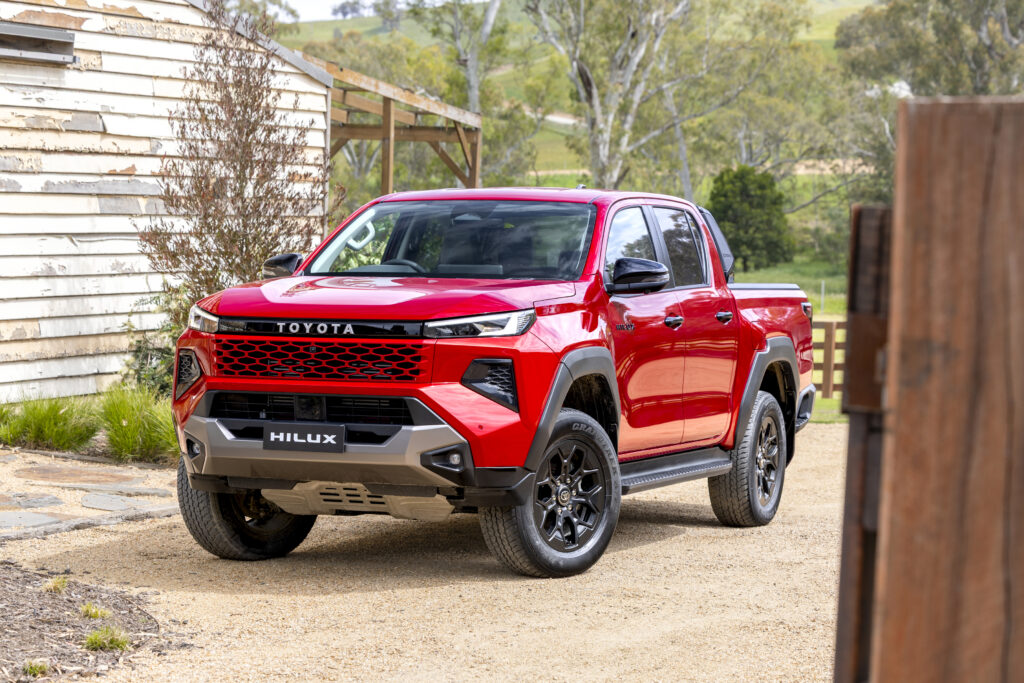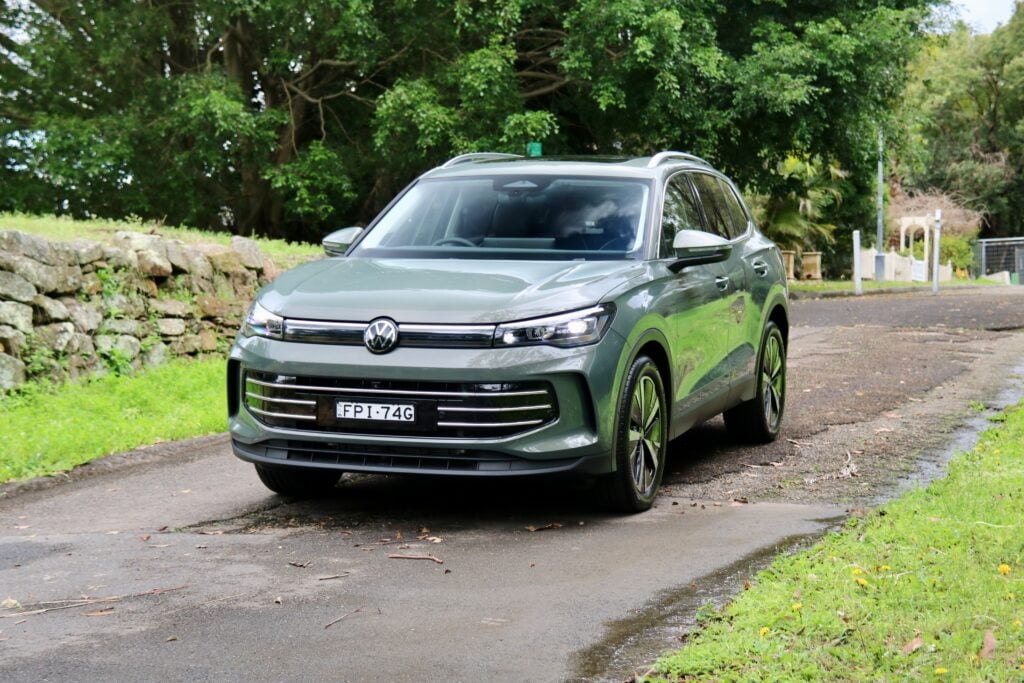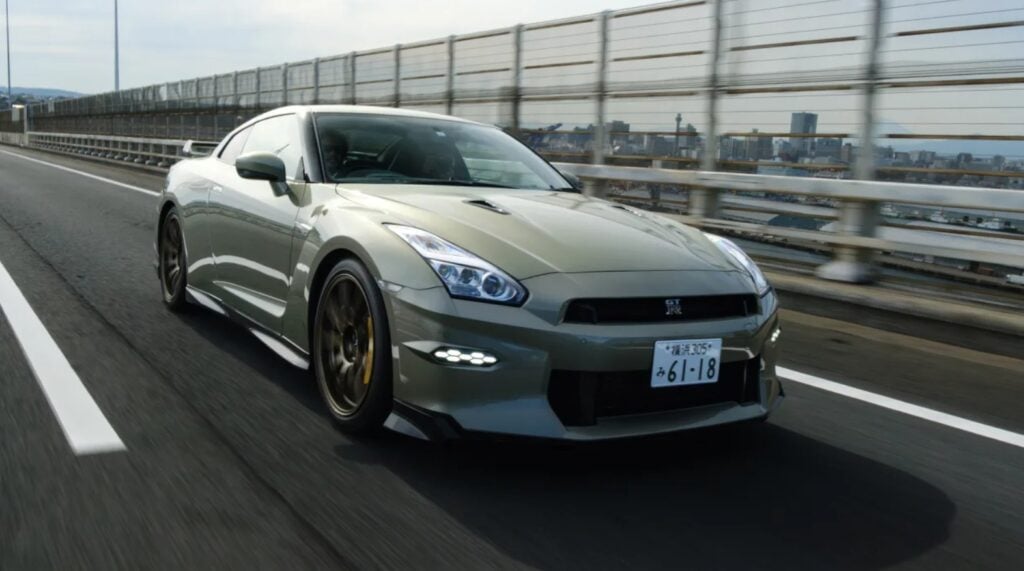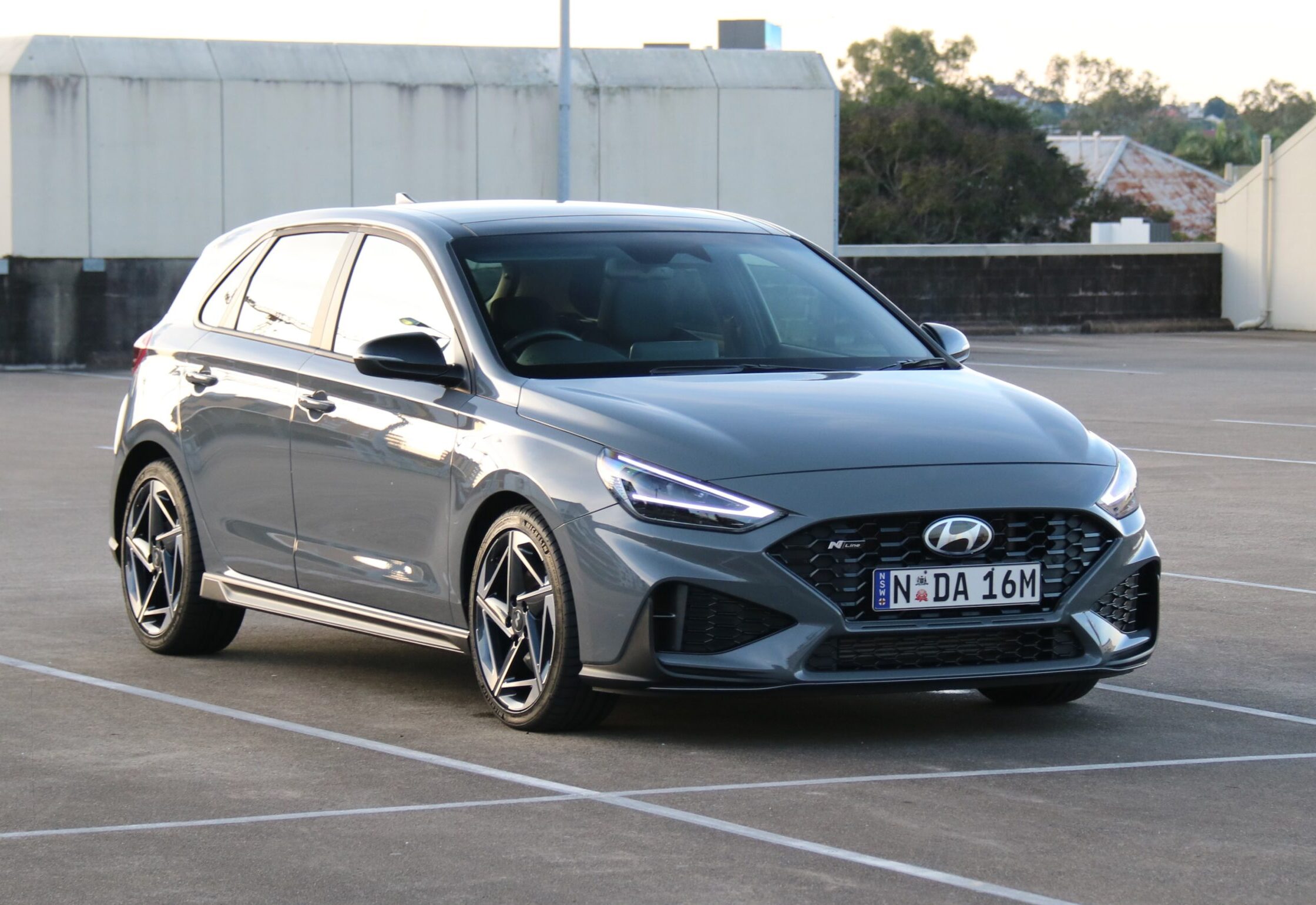
Price: from $41,000 plus on-road costs
Engine: 1482cc DOHC turbocharged four-cylinder, 48V mild-hybrid
Peak power/torque: 117kW (@ 5500rpm)
Peak torque: 253Nm (1500-3500rpm)
Transmission: Seven-speed dual-clutch automatic
Claimed fuel consumption, CO2 emissions: 5.6L/100km, 126g/km
Tested fuel consumption: 7.4L/100km
Length/width/height/wheelbase: 4340/1795/1453/2650mm
Boot: 395-1301 litres
Kerb weight: 1439kg
Warranty: Five-year/unlimited km
Five-year service cost: $2176
| Rating |
|---|
Things we like
- Efficient and likeable engine
- Handsome styling updates
- Excellent handling balance
Not so much
- Urban ride is too firm
- Drivetrain can be laggy
- No spare wheel or cheaper model
The original Hyundai i30, launched in Australia in 2006, was a watershed moment for the brand that changed its reputation forever. Not only did it live up to the brand’s value positioning, but it also gave competitors a run for their money in all-round ability – a feat continued with both the second and third generations of the nameplate.
Fast forward to 2025, however, and the global hatchback market is not what it once was – SUVs outsell them by a significant margin and many manufacturers are pulling their development. That means that while there’s a new Kona, the i30 is reportedly not getting a fourth generation and the third generation has been around for nine years, which is much longer than the usual Hyundai lifecycle.
It’s just received another update, so is the Hyundai i30 N Line still a great hatchback option to consider?
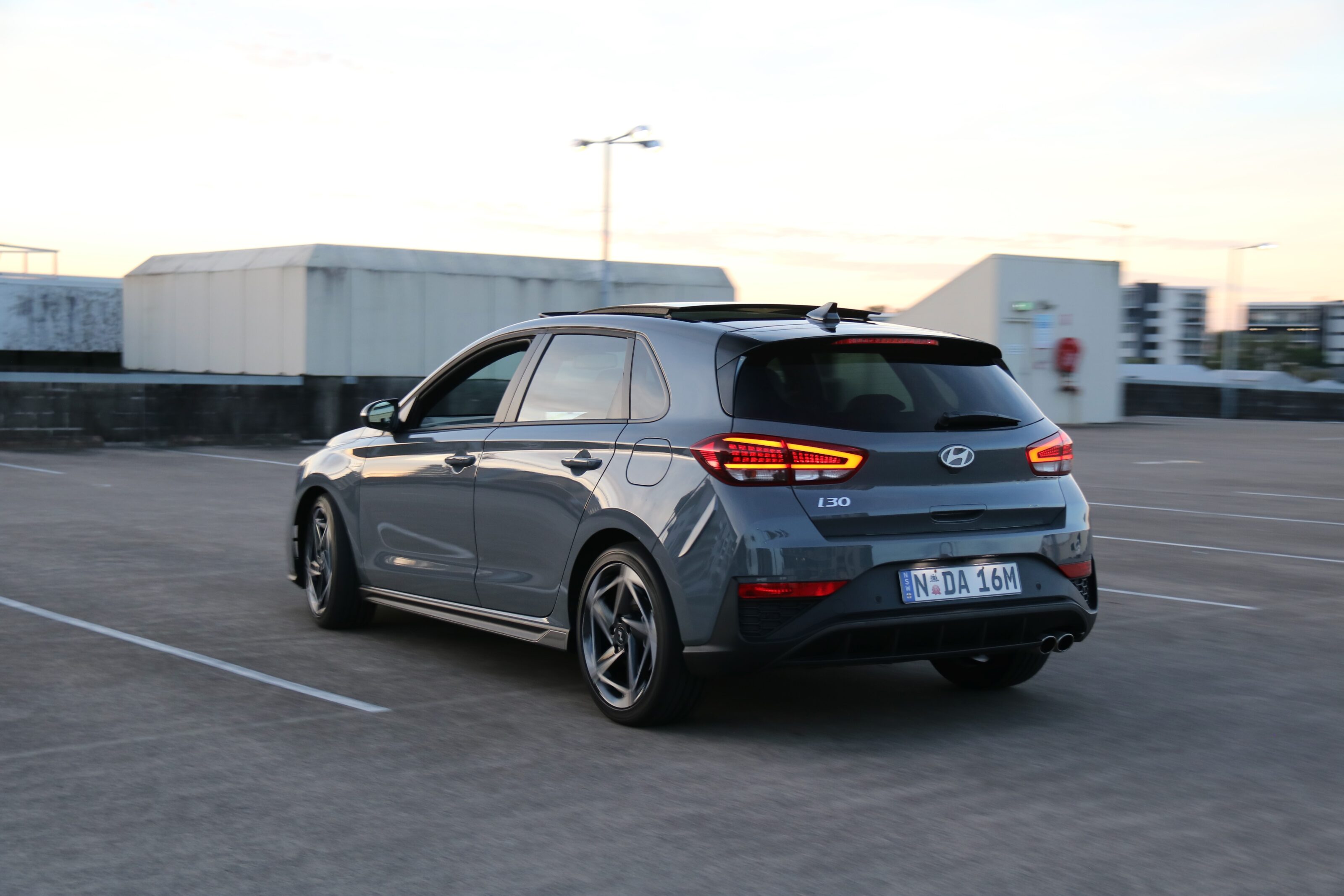
Price and equipment
For now, there are only two non-N i30 hatchback models for sale in Australia: the N Line and N Line Premium, with lesser models sadly no longer available. The i30 hatchback is now globally sourced only from Hyundai’s Czech factory, meaning that the i30 is no longer available as part of a free-trade agreement. As a result, pricing has risen by up to $4000 compared with when it was produced in South Korea.
2025 Hyundai i30 N Line hatchback pricing (plus on-road costs):
| N Line | $36,000 |
|---|---|
| N Line Premium | $41,000 |
Hyundai i30 N Line Premium standard equipment:
- 18-inch alloy wheels with Michelin Pilot Sport 4 tyres and a tyre repair kit
- Dusk-sensing automatic LED headlights
- Rain-sensing automatic wipers
- Keyless entry with push button start
- Heated/auto-folding mirrors
- Panoramic sunroof
- Dual-zone automatic climate control with rear vents
- Leather and suede upholstery
- 12-way electric driver’s seat with memory and manual cushion extension
- Heated front seats
- Heated leather steering wheel
- 10.25-inch digital driver’s display
- 10.25-inch touchscreen with BlueLink live services and over-the-air updates
- Wired Apple CarPlay and Android Auto
- Satellite navigation with live traffic
- AM/FM/DAB+ digital radio
- Six-speaker sound system
- 4x USB ports
- 7x airbags
- Autonomous emergency braking with pedestrian, cyclist, motorcycle and junction assistance
- Adaptive cruise control with stop and go functionality
- Lane keeping assistance with highway driving assistance
- Auto high beam
- Blind-spot monitoring and rear cross-traffic alert (both with braking)
- Rear occupant alert
- Safe exit assist
- Front and rear parking sensors
- Reversing camera
- Tyre pressure monitoring
Interior, practicality and bootspace
Anybody who’s experienced a current shape i30 will find the updated model entirely familiar inside as its not changed much in its nine years on sale. While some may lament that fact when comparing it against newer models, the reality is that Hyundai nailed the basics when it went on sale and they still impress today: the soft touch plastics on the dashboard and all doors, excellent ergonomics and buttons for functions dotted around the cabin. It’s all easy to use and we love it for that.
The i30 N Line Premium is equipped with a 10.25-inch touchscreen and a new 10.25-inch digital driver’s display, both of which look bright and expensive. The touchscreen now features the company’s BlueLink live services and live traffic for the sat-nav, though not wireless smartphone mirroring.
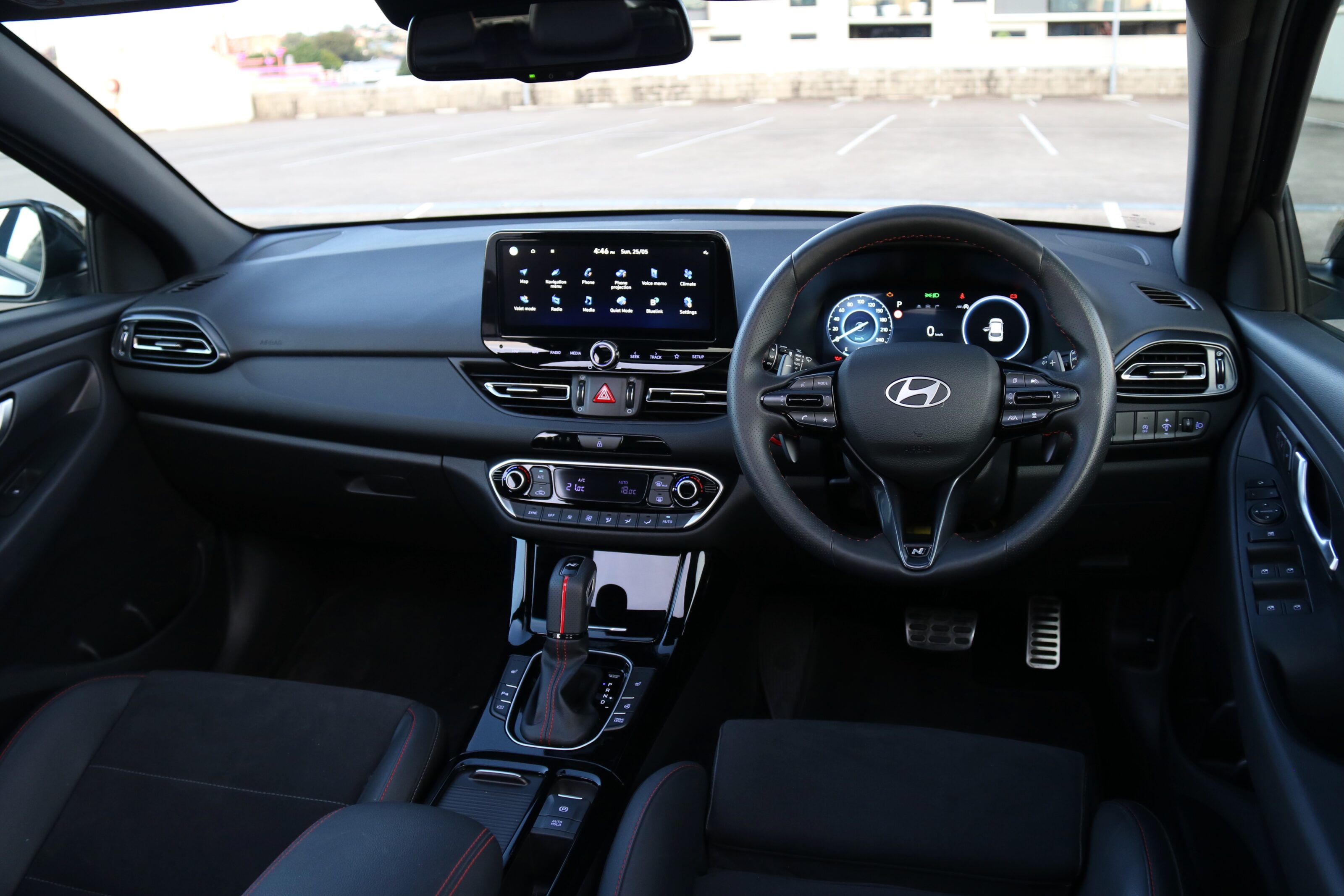
While it’s not as feature-packed as the newer Hyundai system – which would be quite expensive to employ in the i30 – it’s easier to use. While the former Infinity sound system has been shelved, the no-name six-speaker unit is surprisingly punchy. Thank you to European sourcing.
It’s also quite a practical cabin with large sectioned door bins and big cup holders in the centre console with a sliding cover. There’s also a wireless phone charger and a box underneath the sliding centre armrest lid.
The front seats are comfortable and supportive, giving you a hug every time you get into it – we also love the adjustability for the driver’s seat, especially the very Euro seat cushion extension.
The rear seat is one of the best in the segment with comfortable seating, a good amount of room and features as well, with air vents, an armrest with cup holders, map pockets, two USB-C ports and sectioned door bins. Four adults will be quite comfortable in the i30 N Line hatchback, helped further by the expansive panoramic sunroof in the Premium letting in lots of light.
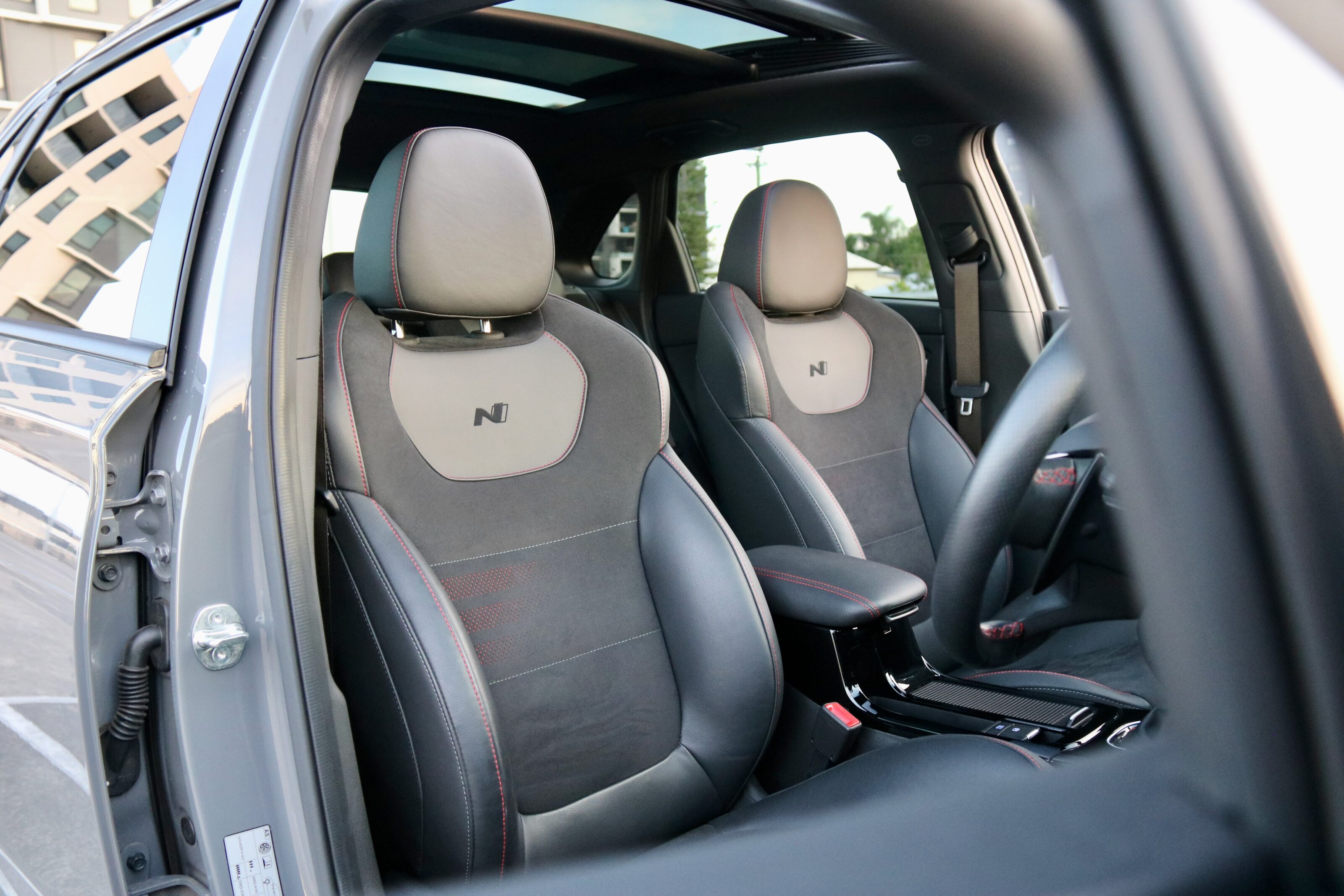
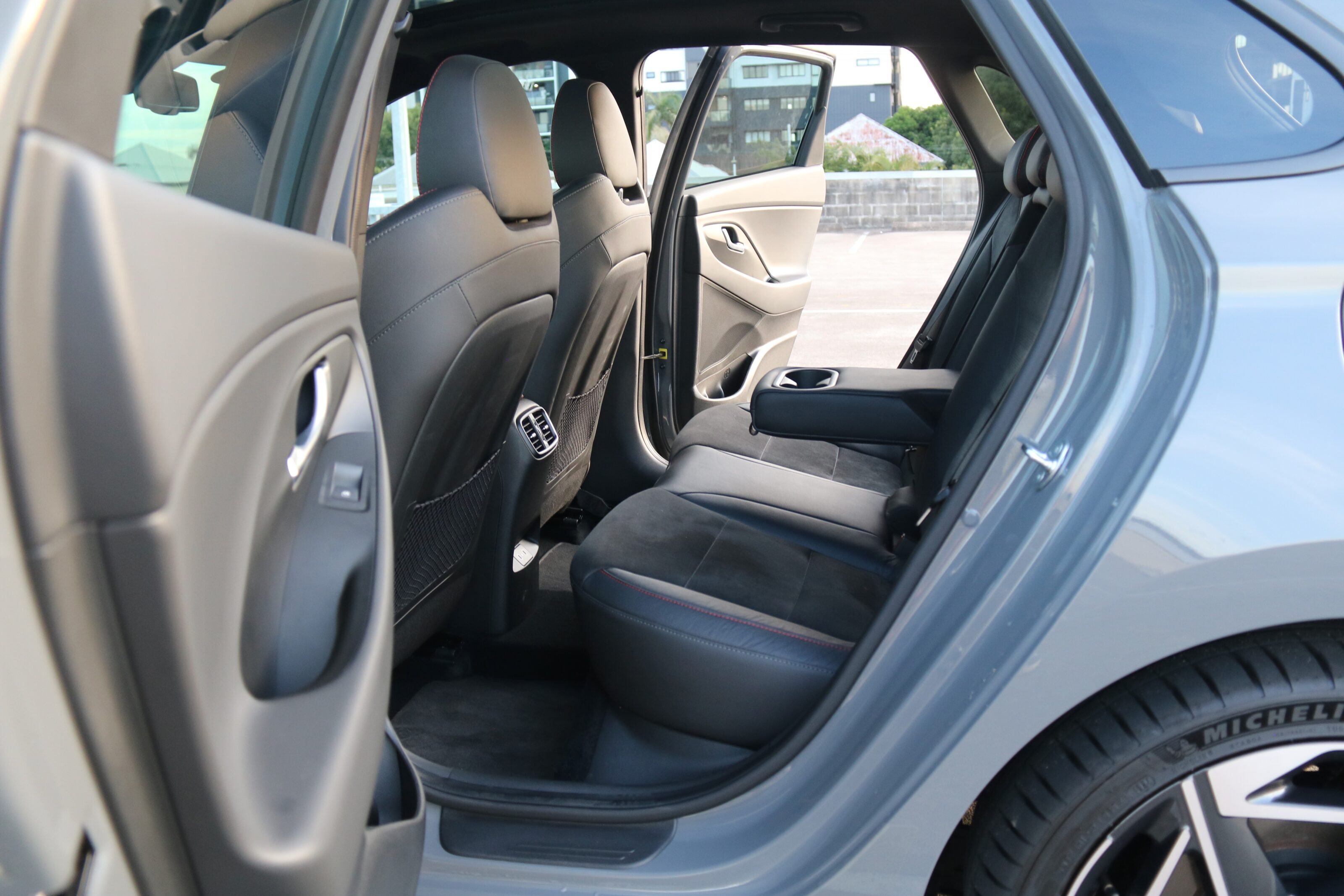
The boot of the i30 hatchback measures a healthy 395 litres with the seats up and 1301L with them folded. There’s also some under-floor and side storage, a few hooks to hang bags off and a 12V socket for something like a vacuum, but it lacks a spare wheel as the mild-hybrid system’s battery sits underneath the boot floor. It also lacks the pre-updated model’s dual-level floor for a flat surface when the seats are folded – there’s now an annoying lip.
Performance and economy
The updated i30 N Line hatchback uses a new 1.5-litre turbocharged four-cylinder petrol engine that’s paired to a 48V mild-hybrid system. It makes 117kW of power (at 5500rpm) and 253Nm of torque (between 1500 and 3500rpm) and is mated solely to a seven-speed dual-clutch transmission in Australia.
Hyundai claims combined fuel consumption of 5.6L/100km and CO2 emissions of 126g/km, and in our 95 per cent urban testing, achieved a result of 7.4L/100km – above the claim but still a big improvement on petrol i30 models of the past. The i30 N Line can also run on 91RON regular unleaded fuel, while it also features a 50-litre fuel tank.
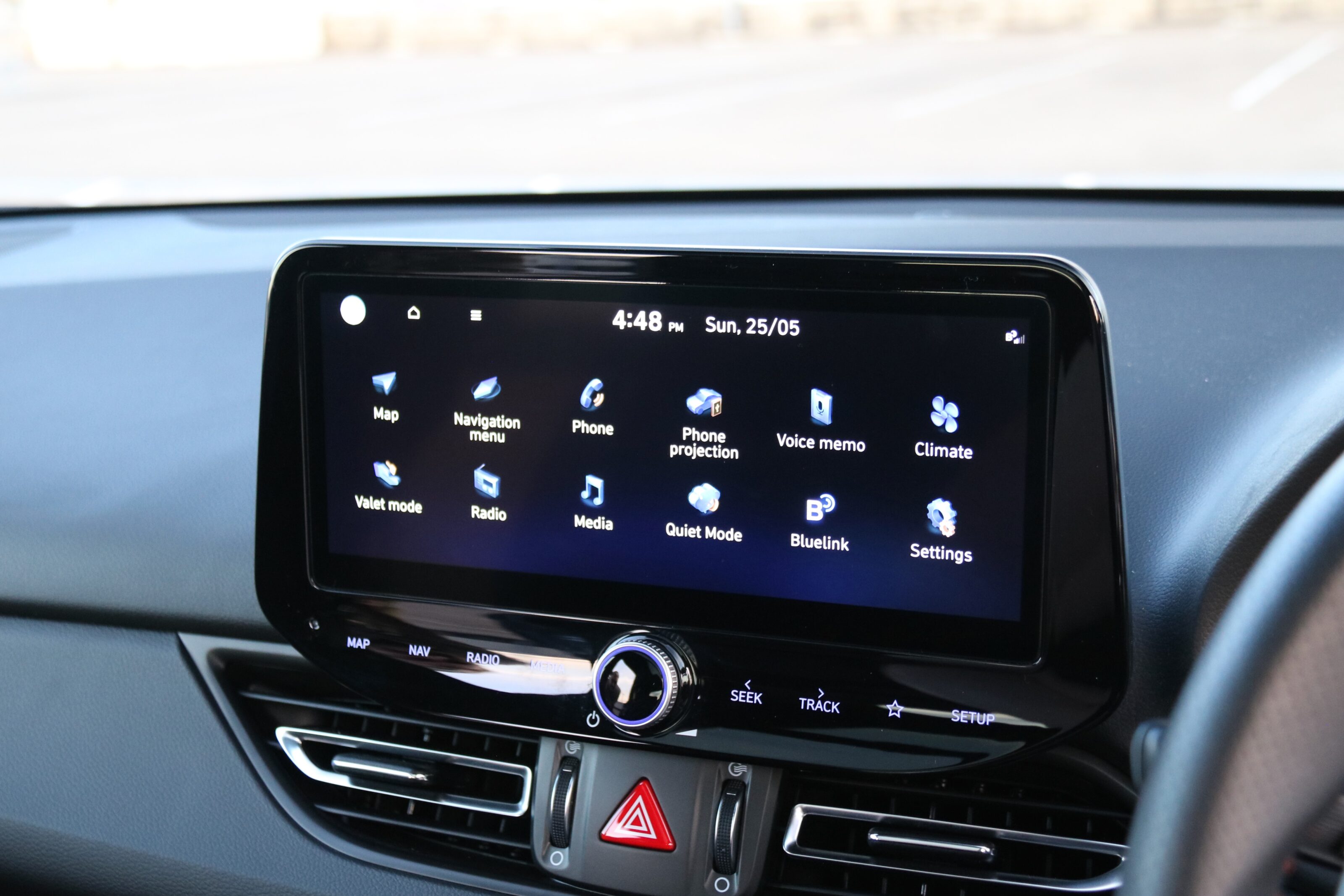
On the road
The i30 N Line earned a long held reputation as a warm hatchback that sits below the full-fat N hot hatch but above the regular i30 models. It’s fun, quick and good value for money. To drive, the updated N Line is fabulous – its handling is sharp, body control is excellent and the steering is quick and communicative. Its ride quality is a bit too firm for rough roads, however, but get it onto a great bit of country road and it’s a riot.
Where it’s not quite as good as the pre-updated model is its drivetrain. While the new 1.5-litre turbo mild-hybrid set up is punchy enough in its own right, the i30 N Line used to have a 1.6-litre turbo engine that endowed it with more impressive performance – which, by the way, is still available in the i30 N Line sedan. Think of the 1.5T as a replacement for the old naturally aspirated 2.0-litre engine in base-to-mid i30 models and it makes more sense as not only is it punchier but significantly more efficient in the real world.
While the new engine’s 253Nm peak torque is only 12Nm short of the 1.6T, its 117kW power figure is much less than the 1.6T’s 150kW and while the new donk feels satisfyingly punchy in the mid-range, it’s definitely not as quick as the 1.6T. Its claimed 8.6-second 0-100km/h sprint is at least a second slower than, so why give it less performance? The 1.6T simply isn’t available from Czech production for the i30 hatchback and the 1.5T is now the most powerful non-N unit available globally.
However, thanks to its lesser outputs and mild-hybrid bits, the 1.5T is also a lot more efficient than the former 1.6T. In addition to the start-stop system, the mild-hybrid allows the engine to switch off when coasting and braking, for example, like a full hybrid. It delivers more efficiency but it can be caught out needing even mild acceleration and combined with the sometimes dopey dual-clutch transmission, you frustratingly can be waiting a few seconds for power. Changing the drive mode to normal or sport wakes it up, but it defaults to eco when the engine is switched on.

Service and warranty
As with every other new Hyundai product, the i30 N Line is covered by a five-year/unlimited km warranty with 12 months of roadside assistance that is extended a further 12 months with every dealer service.
Its service intervals are a short annual/10,000km (whichever comes first) and five years/50,000km of servicing costs $2176 ($435.20 per service).
Verdict: should I buy a Hyundai i30 N Line hatchback?
In a sign of the strange time that we live in, if you’re wanting a non-N Hyundai hatchback in Australia, the updated i30 N Line is your only choice. There’s no getting away from the fact it’s both more expensive and slower than the pre-updated model, and it’s lost a few pieces of equipment thanks to European sourcing such as full leather trim. However, it’s also gained features such as driver’s seat memory, the company’s BlueLink live services and more active safety kit.
The i30 N Line has a lot going for it: it’s refined, practical, quite fun to drive, punchy enough in most driving situations and well equipped as well. Counting against it is its firm ride quality, lack of spare wheel, dopey transmission at low speeds and that in some areas, it is feeling its age compared with newer Hyundai products. But it’s an honest and entirely likeable product that deserves a lot of love against the endless supply of small SUVs – Hyundai’s own Kona included.
Hyundai i30 N Line rivals
Toyota Corolla
Mazda3
Skoda Scala
